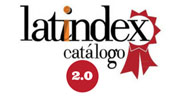An evolutionary computational approach for the dynamic Stackelberg competition problems
DOI:
https://doi.org/10.29019/enfoqueute.v7n2.92Keywords:
Stackelberg competition, evolutionary dynamic optimization, bilevel optimization, metaheuristicsAbstract
Stackelberg competition models are an important family of economical decision problems from game theory, in which the main goal is to find optimal strategies between two competitors taking into account their hierarchy relationship. Although these models have been widely studied in the past, it is important to note that very few works deal with uncertainty scenarios, especially those that vary over time. In this regard, the present research studies this topic and proposes a computational method for solving efficiently dynamic Stackelberg competition models. The computational experiments suggest that the proposed approach is effective for problems of this nature.
Downloads
References
Boussaïd, I., Lepagnot, J., & Siarry, P. (2013). A survey on optimization metaheuristics. Information Sciences, 237, 82-117.
Colson, B., Marcotte, P., & Savard, G. (2005). Bilevel programming: A survey. 4OR, 3(2), 87-107.
Colson, B., Marcotte, P., & Savard, G. (2007). An overview of bilevel optimization. Annals of Operations Research, 153(1), 235-256.
Cruz, C., González, J. R., & Pelta, D. A. (2011). Optimization in dynamic environments: a survey on problems, methods and measures. Soft Computing, 15(7), 1427-1448.
García, S., Molina, D., Lozano, M., & Herrera, F. (2009). A study on the use of non-parametric tests for analyzing the evolutionary algorithms’ behaviour: a case study on the CEC'2005 Special Session on Real Parameter Optimization. J Heuristics, 15, 617-644.
Jin, Y., & Branke, J. (2005). Evolutionary optimization in uncertain environments-a survey. Evolutionary Computation, IEEE Transactions on, 9(3), 303-317.
Legillon, F., Liefooghe, A., & Talbi, E.-G. (2013). CoBRA: A Coevolutionary Metaheuristic for Bi-level Optimization. En E.-G. Talbi (Ed.), Metaheuristics for Bi-level Optimization (Vol. 482, pp. 95-114). Springer Berlin Heidelberg.
León, X., & Navarro, L. (2013). A Stackelberg game to derive the limits of energy savings for the allocation of data center resources. Future Generation Computer Systems, 29(1), 74-83. http://doi.org/http://dx.doi.org/10.1016/j.future.2012.05.022
Meyer-Nieberg, S., & Beyer, H.-G. (2007). Self-Adaptation in Evolutionary Algorithms. En F. Lobo, C. Lima, & Z. Michalewicz (Eds.), Parameter Setting in Evolutionary Algorithms (Vol. 54, pp. 19-46). Springer Berlin / Heidelberg.
Nakamura, T. (2015). One-leader and multiple-follower Stackelberg games with private information. Economics Letters, 127, 27-30. http://doi.org/http://dx.doi.org/10.1016/j.econlet.2014.12.010
Nguyen, T. T., Yang, S., & Branke, J. (2012). Evolutionary dynamic optimization: A survey of the state of the art. Swarm and Evolutionary Computation, 6(0), 1-24. http://doi.org/http://dx.doi.org/10.1016/j.swevo.2012.05.001
Nie, P. (2012). A note on dynamic Stackelberg games with leaders in turn. Nonlinear Analysis: Real World Applications, 13(1), 85-90. http://doi.org/http://dx.doi.org/10.1016/j.nonrwa.2011.07.015
Novoa-Hernández, P., Corona, C. C., & Pelta, D. A. (2011). Efficient multi-swarm PSO algorithms for dynamic environments. Memetic Computing, 3(3), 163-174.
Novoa-Hernández, P., Corona, C. C., & Pelta, D. A. (2013). Self-adaptive, multipopulation differential evolution in dynamic environments. Soft Computing, 17(10), 1861-1881. http://doi.org/10.1007/s00500-013-1022-x
Novoa-Hernández, P., Cruz Corona, C., & Pelta, D. A. (2016). Self-adaptation in dynamic environments - a survey and open issues. International Journal of Bio-inspired Computation, 8(1), 1-13.
Novoa-Hernández, P., Pelta, D. A., & Corona, C. C. (2010). Improvement strategies for multi-swarm PSO in dynamic environments. En J. González, D. Pelta, C. Cruz, G. Terrazas, & N. Krasnogor (Eds.), Studies in Computational Intelligence (Vol. 284, pp. 371-383). Springer Berlin / Heidelberg.
Oduguwa, V., & Roy, R. (2002). Bi-level optimisation using genetic algorithm. En Artificial Intelligence Systems, 2002. (ICAIS 2002). 2002 IEEE International Conference on (pp. 322-327).
Øksendal, B., Sandal, L., & Ubøe, J. (2013). Stochastic Stackelberg equilibria with applications to time-dependent newsvendor models. Journal of Economic Dynamics and Control, 37(7), 1284-1299. http://doi.org/http://dx.doi.org/10.1016/j.jedc.2013.02.010
Sinha, A., Malo, P., & Deb, K. (2014). Test Problem Construction for Single-Objective Bilevel Optimization. Evolutionary Computation, 22(3), 439-477. http://doi.org/10.1162/EVCO_a_00116
Sinha, A., Malo, P., Frantsev, A., & Deb, K. (2014). Finding optimal strategies in a multi-period multi-leader–follower Stackelberg game using an evolutionary algorithm. Computers & Operations Research, 41, 374-385. http://doi.org/10.1016/j.cor.2013.07.010
Storn, R., & Price, K. (1997). Differential Evolution - A Simple and Efficient Heuristic for global Optimization over Continuous Spaces. Journal of Global Optimization, 11(4), 341-359. http://doi.org/10.1023/A:1008202821328
Talbi, E.-G. (2013). A Taxonomy of Metaheuristics for Bi-level Optimization. En E.-G. Talbi (Ed.), Metaheuristics for Bi-level Optimization (Vol. 482, pp. 1-39). Springer Berlin Heidelberg.
von Stackelberg, H. (1952). The Theory of the Market Economy. Oxford University Press.
Wahab, O. A., Bentahar, J., Otrok, H., & Mourad, A. (2016). A Stackelberg game for distributed formation of business-driven services communities. Expert Systems with Applications, 45, 359-372. http://doi.org/http://dx.doi.org/10.1016/j.eswa.2015.09.047
Wang, D., Du, G., Jiao, R. J., Wu, R., Yu, J., & Yang, D. (2016). A Stackelberg game theoretic model for optimizing product family architecting with supply chain consideration. International Journal of Production Economics, 172, 1-18. http://doi.org/http://dx.doi.org/10.1016/j.ijpe.2015.11.001
Downloads
Published
Issue
Section
License
The authors retain all copyrights ©.
- The authors retain their trademark and patent rights, as well as rights to any process or procedure described in the article.
- The authors retain the right to share, copy, distribute, perform, and publicly communicate the article published in Enfoque UTE (for example, post it in an institutional repository or publish it in a book), provided that acknowledgment of its initial publication in Enfoque UTE is given.
- The authors retain the right to publish their work at a later date, to use the article or any part of it (for example, a compilation of their work, lecture notes, a thesis, or for a book), provided that they indicate the source of publication (authors of the work, journal, volume, issue, and date).
























